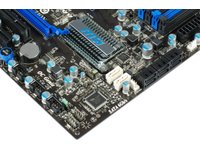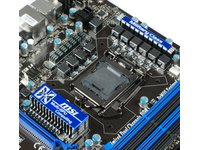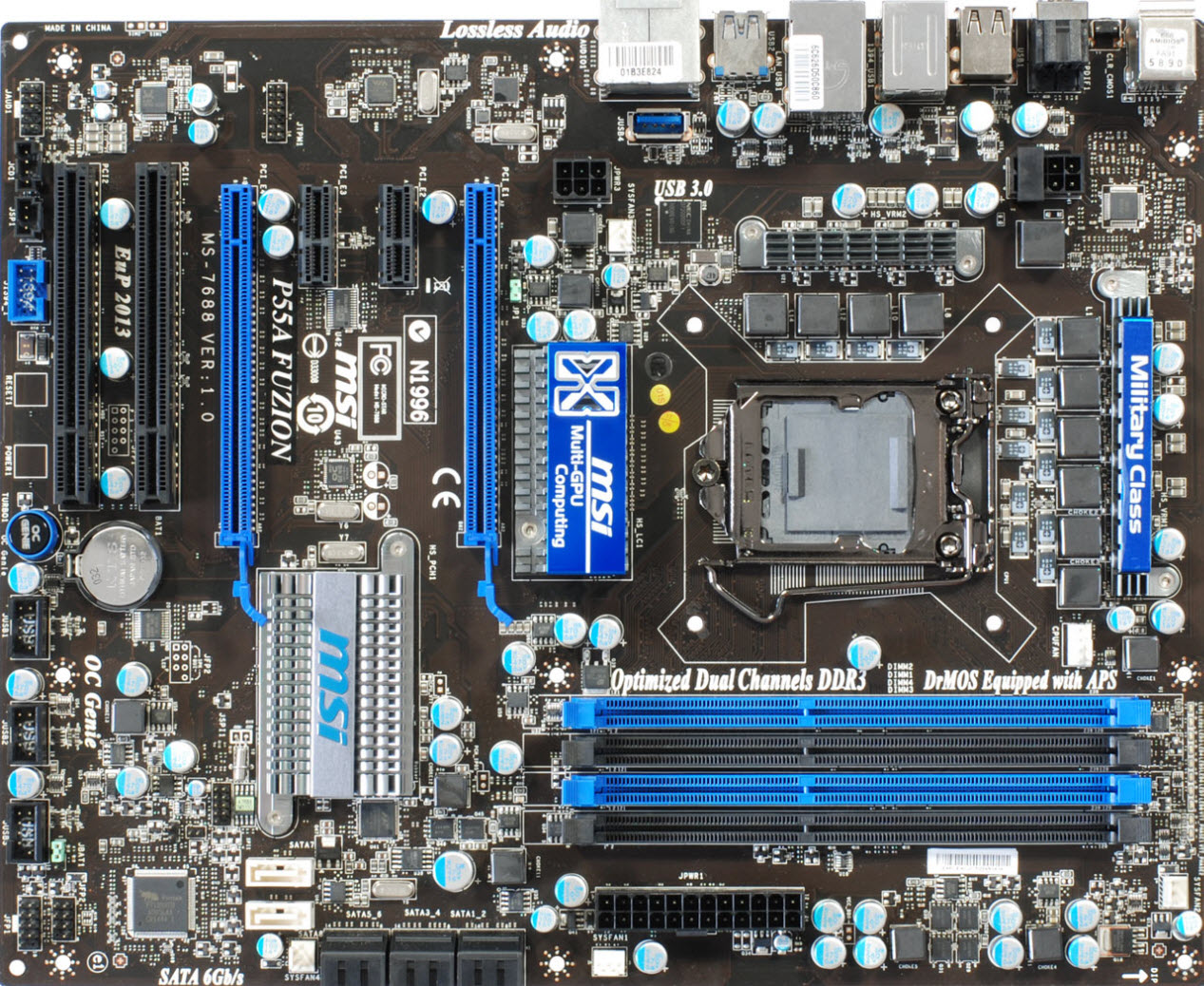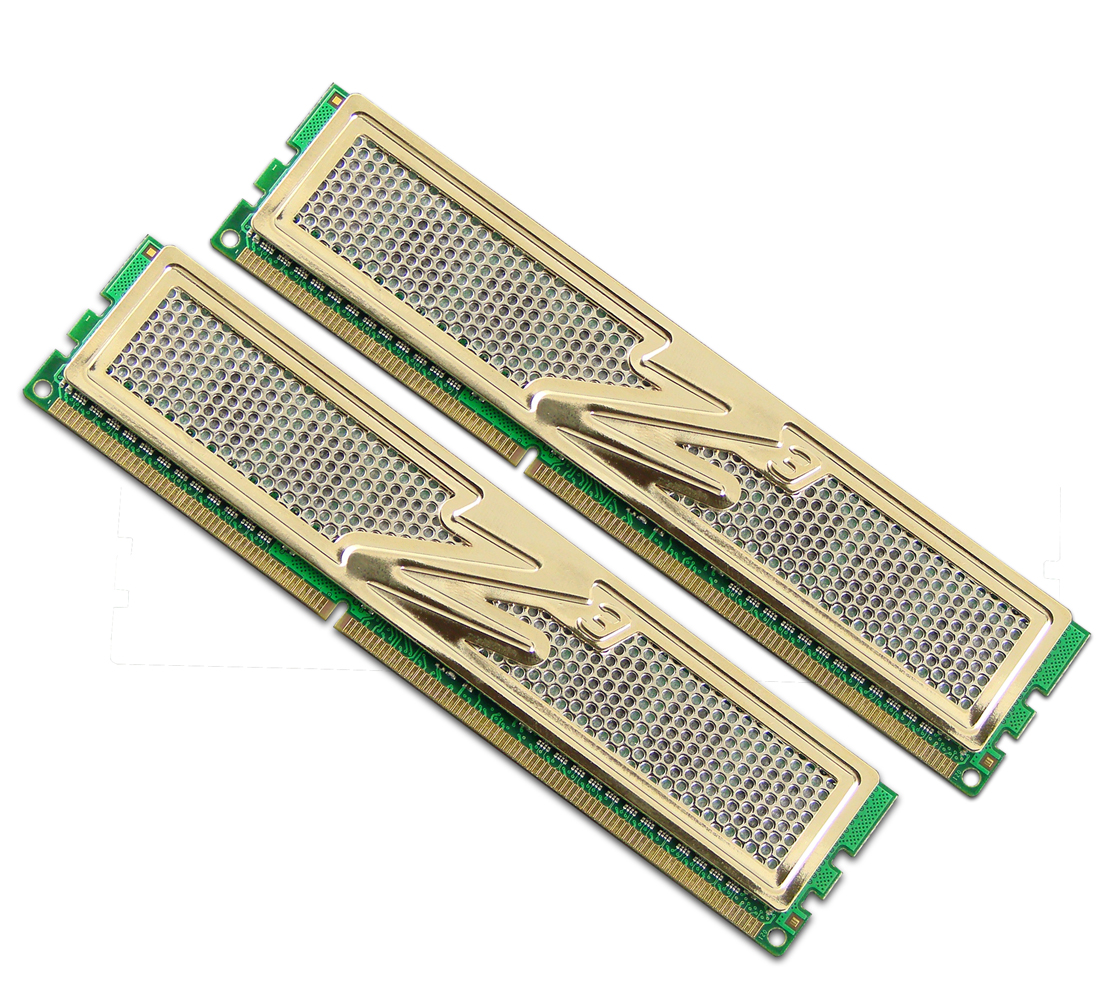Time To Upgrade, Part 2: Picking The Parts To Replace
After looking at whether or not it makes sense to replace a PC built back in 2007 with a more modern machine, we decided to examine three component upgrade options—graphics, storage, and the motherboard/CPU/RAM platform—separately.
Scenario 1: Motherboard/CPU/RAM
In this first set of test runs, we decided to replace the platform, meaning we exchanged the motherboard, processor, and main memory. We did not modify the graphics card or the hard drive, assuming that such an upgrade is most attractive to users needing lots of computing power for rendering, audio/video transcoding, or workstation-type workloads. The reason for swapping all three components is clear: the platform, CPU, and memory are all interdependent.
Motherboard: P55A Fuzion (Intel P55 Express)
We used this motherboard in the last article for its mainstream P55 platform. Most board makers include P55-based motherboards in their portfolios to address overclockers, because the LGA 1156 interface currently offers the best total value in Intel’s current lineup.
MSI’s interpretation of a modern P55 motherboard is based on the P55 Express and the Lucid LT22102 ("Hydra"), which is a PCI Express 2.0 SoC (system on a chip) switching solution with a total of 48 PCIe lanes. It can be used for PCIe load balancing, or enabling dual-card graphics setups. This includes pairing different GPUs from the same vendor and even cross-vendor setups in which an AMD card runs with an Nvidia card. We'll look at this feature soon in an upcoming article.
Thanks to the board's two PCI Express x16 slots, you can accommodate a pair of graphics cards or a graphics card and a high-bandwidth expansion card, such as a storage controller. Just remember that, even though Lucid's solution enables a pair of true x16 links, you're still limited to the bandwidth of Intel's 16-lane (total) integrated PCIe controller. Two more x1 PCIe slots and two 32-bit PCI 2.3 slots accept additional expansion cards. HD audio, gigabit networking, USB 3.0 ports, and a SATA 6 Gb/s controller are also included.


CPU: Intel Core i7-870 (2.93 GHz Quad Core)
We’re using the same quad-core, 45 nm Core i7-870 processor for this comparison that we used in our prior 2007 vs. 2010 story. With Turbo Boost, the 2.93 GHz CPU can crank up by as much as 667 MHz under single-core utilization. Even though Intel is gradually switching to 32 nm manufacturing, this Lynnfield-based chip remains both fast and efficient.
Get Tom's Hardware's best news and in-depth reviews, straight to your inbox.
RAM: 2 x 2 GB DDR3-1600 OCZ Gold
Memory is less relevant in this shootout, since the performance difference between entry-level speeds (DDR3-1066) and hardcore overclocking memory (DDR3-2000 and faster) isn't very substantial. In fact, high-end memory only really makes sense in situations where lofty reference clock rates push memory data rates beyond the range of mid-range memory modules. In those cases, the extra headroom of a high-end kit might be the key to enabling an ambitious configuration. We grabbed some OCZ DDR3-1600 Gold series memory as a reasonable compromise.
Current page: Scenario 1: Motherboard/CPU/RAM
Prev Page Old Vs. New: Where To Spend Your Upgrade Dollars? Next Page Scenario 2: Graphics Upgrade

